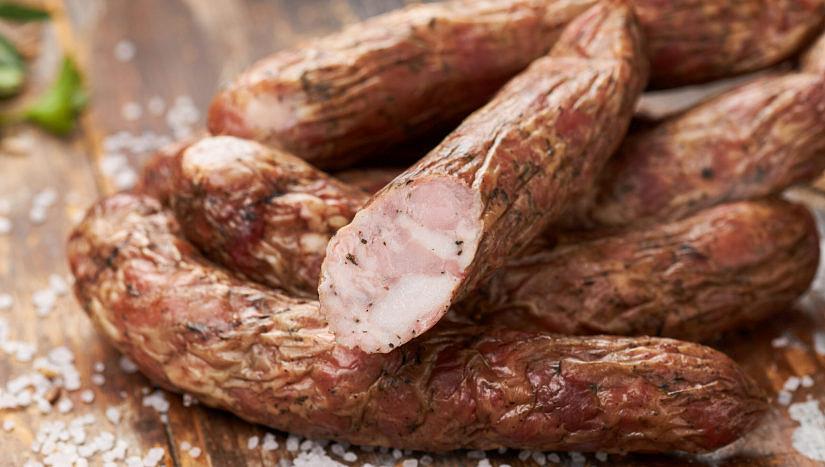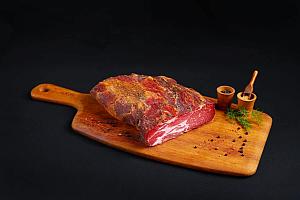Romanian producers begin PGI registration process for Vâlcea Chopped Sausages

Romania’s Traditional Producers, Craftsmen, and Artisans Association of Vâlcea has initiated the process for the registration of the 'Vâlcea Chopped Sausages' (or "din topor" sausages) product in the European Union's Protected Geographical Indication (PGI) register.
The Vâlcea Chopped Sausages are traditionally made following hundred-year-old recipes, with raw materials and ingredients from a specific geographical area, which includes seven communes in Vâlcea County: Mihăeşti, Ocnele Mari, Frânceşti, Popeşti, Roeşti, Lăpuşata, and Roşiile. The product is already certified nationally by the Ministry of Agriculture as a traditional one.
The Protected Geographical Indication status highlights the connection between the specific geographical region and the product's name. To be eligible for this quality label, at least one of the production, processing, or preparation stages must take place in the region.
“The tradition of pork preparation in our area goes back a long time, and the traditional product requires a lot of manual labor and knowledge, as many processes are done by hand. For the 'chopped' sausages, the selection of meat and its chopping with an axe into large pieces is very important. The axe, cleaver, and butcher's knife were locally used tools in households. Even today, the meat is chopped manually, with a cleaver, a more modern tool, but it's still like an axe. The idea is that if you chop differently or with something else, the taste of the meat changes,” said the president of the Vâlcea association, Florin-Felix Gigîrtu.
The salt used in the preparation of the sausages also comes only from the Ocnele Mari Salt Mine, and the smoking process, both cold and hot, exclusively with beech wood. A few spices are used in the sausages' preparation: garlic, thyme, and pepper, in addition to salt.
The documentation for EU certification was submitted earlier this month. The next step is the evaluation procedure for the conformity of the registration dossier. If additional information is requested, it must be submitted within a maximum of 30 days.
The file will be published on the ministry's website for 60 days. After this period, the Vâlcea Chopped Sausages product automatically becomes protected on the national territory until its registration at the European level.
“Subsequently, Romania will submit an application to the European Commission (EC) for protection under the Protected Geographical Indication (PGI) quality system. A new evaluation by the Commission follows, then a 90-day European opposition period, after which the registration and publication in the Official Journal of the EU take place,” said Ionuţ Diaconeasa, an advisor in the Ministry of Agriculture, cited by Agerpres.
(Photo source: Industriacarnii.ro on Facebook)













